The United Arab Emirates Hope orbiter is the first in a series of spacecraft arriving at the Red Planet in the next week.
Updates:
The Mars Hope team released an amazing full disk image of a crescent Mars this past weekend:
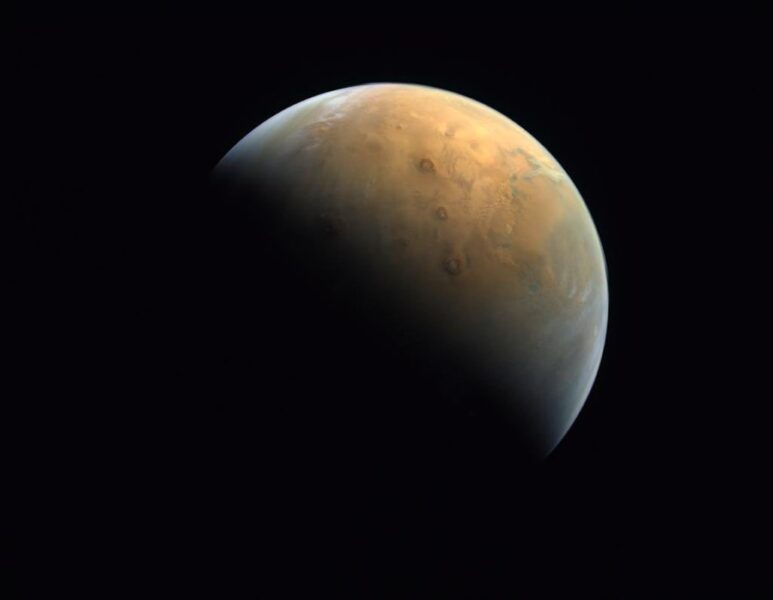
Mohammed bin Rashid Space Center / UAE Space Agency
The United Arab Emirates (UAE) Hope orbiter has arrived has successfully arrived at its destination today, kicking off a series of Mars arrivals.
On Tuesday, February 9th at about 16:00 Universal Time (11:00 a.m. EST), the Hope probe, which also goes by the moniker Emirates Mars Mission, finished burning its thrusters. Over 27 minutes, the probe had slowed from 33 km/s to 5 km/s (75,000 mph to 11,000 mph) to enter orbit around Mars. That achievement is a milestone for the fledgling UAE space agency.
"I'd like to thank our leadership and all the team members who have worked tirelessly on this mission," tweeted Sarah Al Amiri, chairperson of the UAE Space Agency and mission deputy project manager. "We have gained new skills and went through unforgettable experiences."
All the best to EMM team. Today we are making history! pic.twitter.com/zUePZzwi4I
— Sarah Al Amiri (@SarahAmiri1) February 9, 2021
The UAE is the fifth space agency to successfully send a spacecraft to Mars, behind the United States, the Soviet Union, the European Space Agency and India. Hope joins six operational spacecraft already in orbit around the Red Planet.
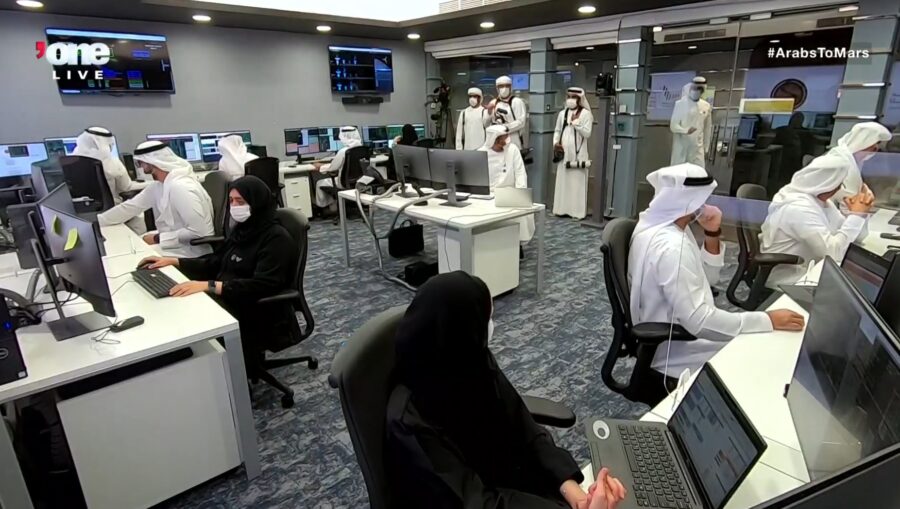
Emirates Mars Mission / Dubai One webcast
Cheers erupted at mission control in Abu Dhabi when word of the successful orbital insertion burn reached Earth. The burn occurred while the spacecraft was behind Mars, and the signal currently takes 11 minutes to reach Earth. NASA’s worldwide Deep Space Network assisted with tracking Mars Hope.
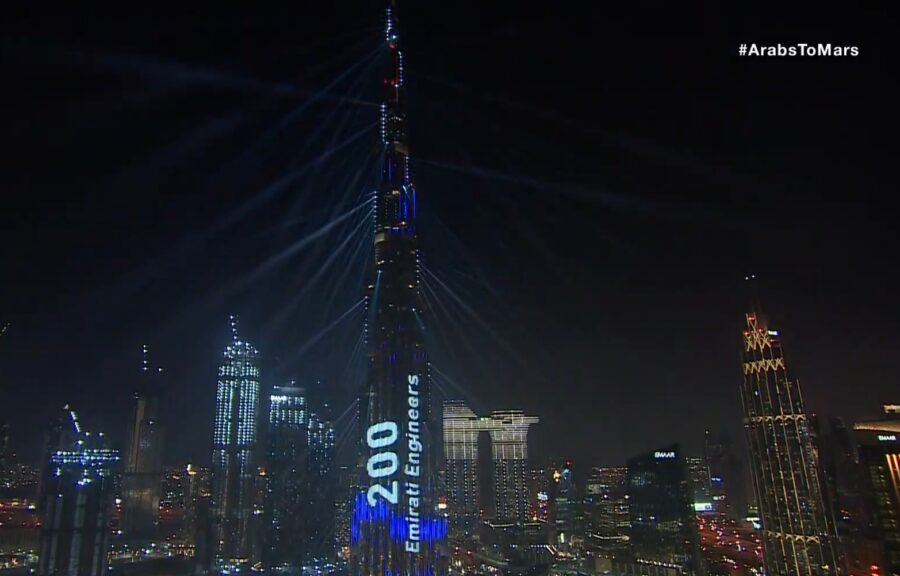
Mars Hope Mission / Dubai One webcast
The Mars Hope team is also extraordinary: the team has an average age of 27 years old, and 80% of the team's scientists and 34% of the team overall are women.
Launched atop an H-IIA rocket from Tanegashima Space Center in southern Japan last year on July 19, 2020, Hope made a nearly seven-month long journey to the Red Planet during an optimal Earth-to-Mars launch window which comes along roughly every 26 months.
Now, the spacecraft is in an initial elliptical capture orbit that takes it between 1,000 and 50,000 kilometers (620 to 31,000 miles) from Mars. Over the coming months, three additional course corrections will insert Mars Hope in a high-altitude, 55-hour orbit that takes it between 22,000 and 44,000 km from the Martian surface. With an orbital inclination of 25° relative to the Martian equator, the spacecraft will have a good view of a range of longitudes on each pass.
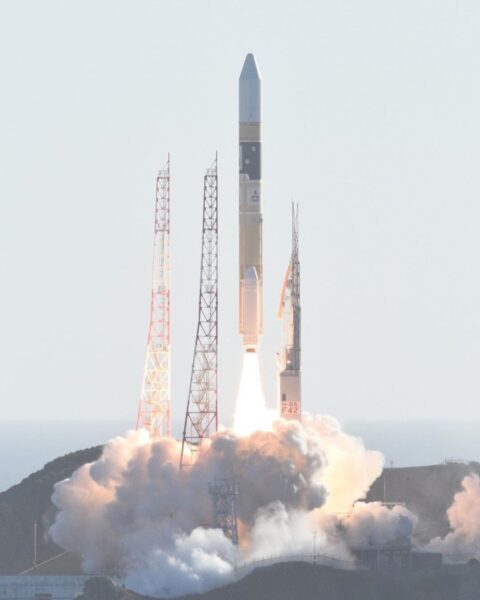
JAXA
"What sets Hope apart from other missions is its unique orbit," says Dimitra Atri (NYUAD Center for Space Science). "With an orbital period of 55 hours, it will be able to observe the entire disc and provide a global picture of the Martian climate." In contrast, MAVEN is on a 4.5 hour orbit, and ExoMars Trace Gas Orbiter is on an even shorter two-hour orbit.
Mars Hope is set for a two year nominal science mission starting in May 2021, with a possible mission extension out to 2025.
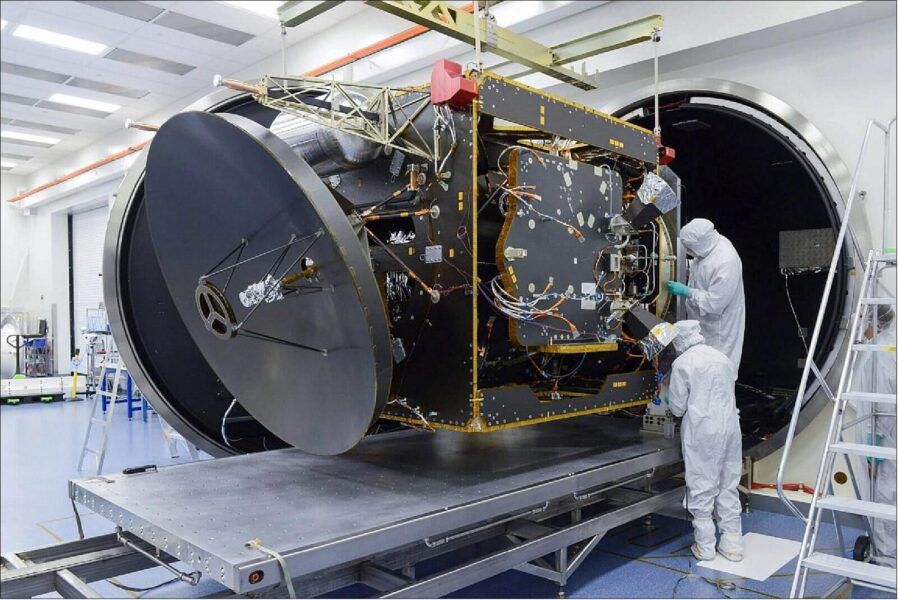
MBRSC / LASP
The mission is a capstone for UAE’s space program, which was just established in 2014. Hope (Al Amal in Arabic) was built at the University of Colorado as part of a collaboration between the Mohammed bin Rashid Space Centre (MBRSC) and the University of Colorado, Arizona State University, and the University of California, Berkeley. The aim of the mission is to analyze weather in the upper and lower Martian atmosphere, including regional and global dust storms and seasonal changes.
To accomplish this, Mars Hope carries a suite of instruments, including:
- The Emirates Mars Ultraviolet Spectrometer (EMUS), developed at the University of Colorado, is an imaging spectrograph that operates in the 100- to 170-nanometer range. It will study the atmosphere above 100 km, which includes the thermosphere and exosphere.
- The Emirates Mars Infrared Spectrometer (EMIRS), developed by MBRSC and ASU, will cover a wavelength range of 6 to 40 microns to measure temperature, dust, ozone, and water ice and vapor in Mars's lower atmosphere, up to an altitude of 50 km.
- The Emirates eXploration Imager (EXI) will likewise focus on the lower atmosphere, with a multi-band camera whose expected resolution will reach down to about 8 km. The instrument is a joint project between University of Colorado, University of California, and MBRSC.
"Hope will also measure water vapor, ozone and information about dust in the atmosphere," says Atri. "The interaction of extreme solar events with Mars is very important to understand because they pose danger to future astronauts."
The UAE currently has two astronauts training at NASA's Johnson Space Center for a future expedition to the International Space Station, and more Emirati astronauts will join them later this year. UAE also plans to launch a lunar rover named Rashid in 2024. Over the longer term, the country's Mars 2117 Project aims to establish a base on Mars early in the next century.
Mars Rollcall in Orbit
Hope joins quite a crew in Mars orbit: NASA’s Mars Odyssey, Mars Reconnaissance Orbiter and MAVEN, the ESA’s Trace Gas Orbiter and Mars Express, and India’s Mangalyaan are all still active.
And more are coming: NASA’s Perseverance rover is set to come in for a landing at Jezero Crater on February 18th. China’s Tianwen 1 orbiter/lander/rover arrives in Mars orbit before that, on February 10th but won't land in Utopia Planitia until May.
It’s the start of a busy Mars season, for sure. Welcome to the Red Planet, Hope!
Emily Lakdawalla previews what's coming: "Three Missions Head for Mars"
 2
2









Comments
Robert-McCabe
February 10, 2021 at 4:10 pm
They left out the Mars Reconnaisance Orbiter!
You must be logged in to post a comment.
David DickinsonPost Author
February 11, 2021 at 8:51 am
Hi Robert,
Yup, good catch. Thanks, fix'd!
You must be logged in to post a comment.
You must be logged in to post a comment.